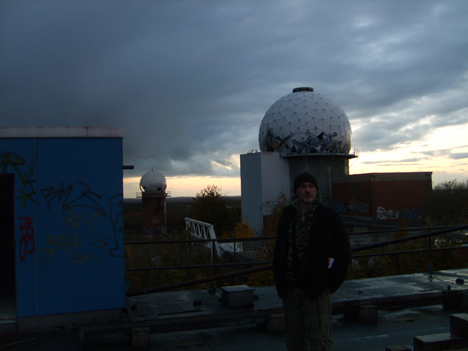KIM CASCONE
PEOPLEText: Shintaro Miyazaki
The first time I noticed the name Kim Cascone, was maybe 8 years ago, when I researched a bit about experimental electronic music. He founded 1999 a now very big mailinglist-community called microsound, which formed a platform for all, who were interested in strange sounds, sound and audio equiments and experiments with sound and music.
Kim Cascone, born 1955, is one of the top-ten most intriguing pioneers of contemporary experimental electronic. And he is not only famous for his artistic work, but also as a sounddesigner and not enough also as a theorist. One text that many young followers of him influenced a lot is “The Aesthetics of Failure: “Post-Digital” Tendencies in Contemporary Computer Music” published in Computer Music Journal (24:4) in 2000.

You are famous both as a laptop composer/ field recording artist and as a sounddesigner. What is the best description?
I really hate descriptions and labels because they set expectations on the part of the reader or listener. I begrudgingly refer to myself as a ‘composer’ only because I had to put something on my passport application. But to paraphrase something Frank Zappa once said: ‘a composer is someone who puts one sound after another’…so I guess that makes me a composer.
What does the word post-digital mean for you?
It seems that there is no longer a distinction between analog and digital. The analog world has been almost fully subsumed into the digital one. So now we are no longer enthralled with the digital realm; we don’t consider it unique; it is simply another domain where we enter and exit analog data from. Everything we do touches or is stored in the digital domain. So we are past the novelty stage of digital technology; we no longer compare analog to digital reproduction and there is no longer the concept of an ‘original’ – hence we are in a post-digital era. One where we are almost done migrating all content into that domain. Maybe we are now in the ‘cloud’ era? Again, these are just labels or descriptions that are meaningless except for being able to communicate these ideas to others.
![]()
How are you producing your music?
Nowadays I use my microphones as much as my laptop. I recently moved from OS X to Linux for my performance and admin work but I still keep my old creaky Powerbook G4 around to run Max/MSP and my favorite VST plugins. But these days I’m doing a lot of field recording which I manipulate and edit on OS X then pull into Ardour on my Ubuntu laptop in order to compose it. I’m also planning to use Ardour for live performance i.e. treating my performances as live mixes.
I found out that you worked in the late 70ies in a company called Electronics for Medicine after you studied electronic music at Berklee College of Music in Boston before. How was that and what was your work?
I left Berklee in 1976 order to concentrate more fully on electronic music and as a result I became very interested in electronics. So I ended up studying audio engineering at the Institute of Audio Research in Greenwich Village and then electronic theory at a technical institute in midtown Manhattan. It was around that time I was hired as a stockroom clerk for Electronics for Medicine in upstate New York, where I was living at the time. Over the period of four years I moved up in the company to an Engineering Technician and gained a considerable amount of knowledge about electronics. I built an Aries Synthesizer from kits about that time since I couldn’t afford my dream synth: an ARP 2600. I also built a huge modular synth of my design for a client — but from that experience I decided to build gear for myself rather than other musicians.
Read more ...





